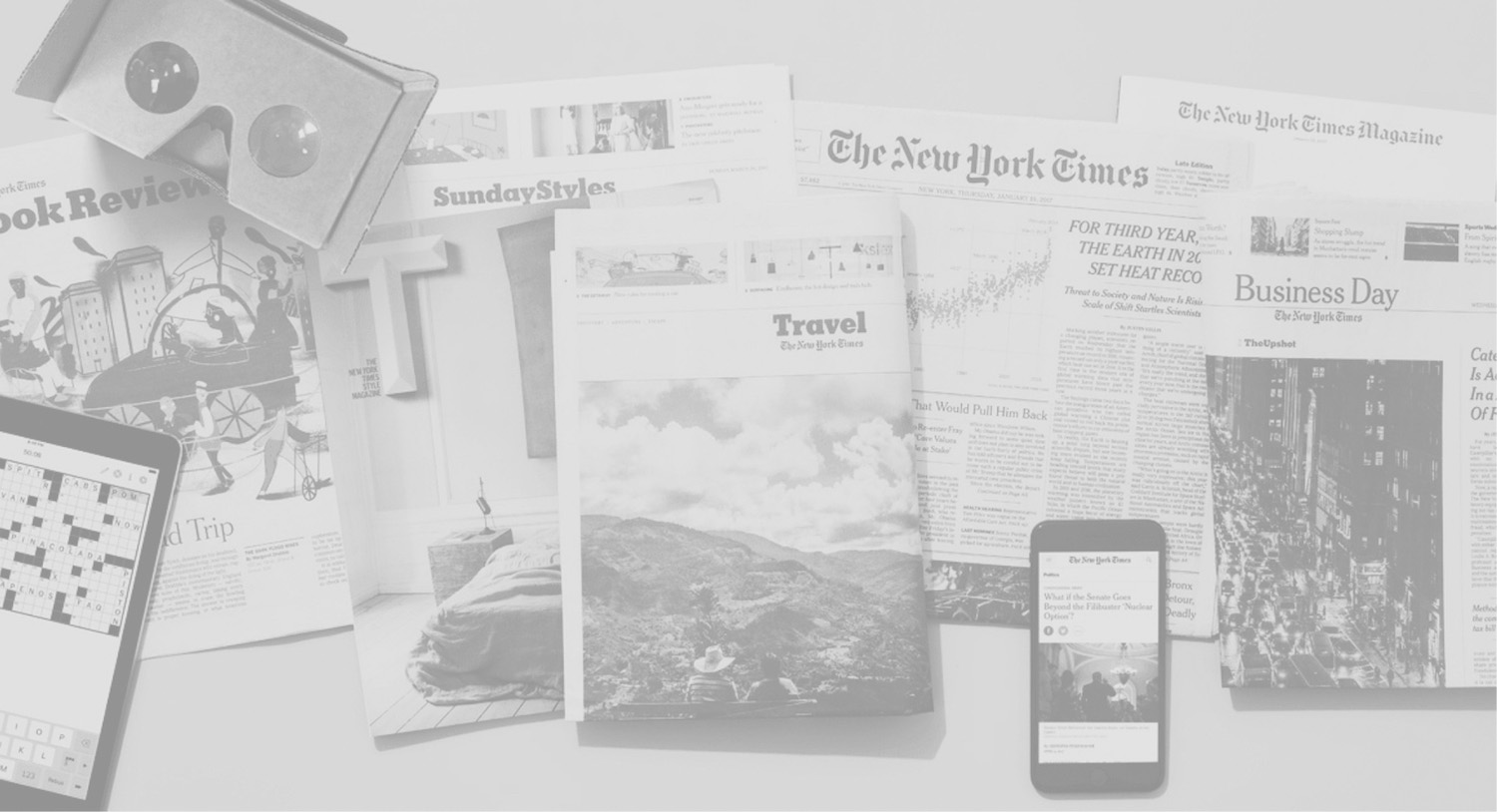It’s hard to believe it was only 10 years ago when Zuora founder and CEO Tien Tzuo was heralding the New York Times’ seismic shift to a digital subscription model after relying primarily on advertising dollars for over 150 years.
It was early 2011 when the Times introduced their paywall, and despite the grumblings of the “I want my news for free!” crowd, it was an out-of-the-gate success: in the first three weeks after they put up the paywall, they attracted 100,000 digital subscribers. Tzuo predicted at the time that this was just the beginning of a shift to rely more on digital subscribers than advertisers for revenue, and he was right: The media giant added 2.3 million digital-only subscriptions in 2020 alone, more than in any previous year, bumping them to more than 7.5 million total subscriptions across digital and print.
To put this in perspective, the Times has more digital subscribers in Dallas–Fort Worth than the Dallas Morning News, more digital subscribers in Seattle than the Seattle Times, more digital subscribers in California than the LA Times or the San Francisco Chronicle. And they’re well on their way to achieving their goal of reaching 10 million digital subscribers by 2025.
While not many companies can expect to achieve the remarkable growth the “Gray Lady” has, there are lots of good lessons to learn and tactics to copy in looking at their model.
FOCUS ON LIFETIME CUSTOMER VALUE
For the first few years of its digital subscription life, the Times relied heavily on irresistible short-term discounts to get people in the digital door. One of their most successful early offers was 99 cents for three months of access, but the retention on those subscribers was horrendous. So the company made a carefully considered shift to focus on long-term retention and maximizing lifetime customer value (LTV). And in the years since, the Times has become expert at understanding every stage of the subscriber life cycle.
By the time Donald Trump entered office in January 2017, it was clear that their news-hungry base was only going to grow. They knew it was important to take advantage of the moment by focusing on attracting and retaining customers for the long haul, while staying true to their core mission of, as David Gurian-Peck, the Times’ VP of subscription growth & planning, says, “making sure that we’re providing journalism worth paying for.” They used audience and engagement metrics to figure out what subscribers were reading, how often they were coming back, and how healthy their relationship was to the company.
THINK OUTSIDE THE CORE PRODUCT
Like any big player, the Times knows they can’t rest on their (admittedly epic) laurels. In the Subscription Economy, it’s all about keeping your loyal fans engaged with newer, better stuff. So using their valuable customer data, the Times doubled down on investments in growing their content ecosystem. They launched their first podcast, The Daily, which now attracts 4 million listeners a day (The Daily’s audience is almost twice as large as the paper was at its peak, and it’s only four years old).
They also created mini-businesses within the core subscription model based on customer data. Their Cooking subscription is among the most popular with 726,000 subscribers paying $5 a month (or $40 a year). And in 2020, their Games subscription leapfrogged Cooking: it now has 840,000 subscribers, up 40% from the end of 2019. And just recently, they hired Jonathan Knight (of Words with Friends and FarmVille fame) to create more “original” digital gaming experiences after seeing their Spelling Bee catch fire in 2020.
But for all of this growth in new areas of content, they’ve come to understand that it isn’t just about providing differentiated content, but producing enough volume to capture attention share in an increasingly bloated media landscape. (Netflix figured out the same thing early on.)
CUSTOMERS HATE ADVERTISING (AND THAT’S OKAY)
In the 1970s, the average U.S consumer was exposed to about 500 ads a day. Today that number is around 5,000. It’s no surprise, then, that customers are doing everything they can to avoid those toxic intrusions. And that’s been horrible for news companies like the Times. In 2020, their total ad revenue fell 26 percent (to $392.4 million), with print ad revenue bearing the brunt.
Yes, the pandemic was to blame for the 2020 cliff-dive, but ad revenues have been declining at the Times for more than a decade as Google and Facebook gobble up every crumb. It hasn’t been easy, but the Times has proven that you don’t need to rely on ads to run a successful media business anymore. Now, the Times hasn’t gone as far as the Netflixes of the world and eschewed advertising altogether—yet. But they’ve definitely shown that over-reliance on an ad-based model just won’t cut it anymore.
PRICING MATTERS
When the Times went all in on digital, a big part of the learning curve was figuring out a pricing model that hit that sweet spot: lucrative enough to lure people in and smart enough to keep them there. They invested in an internal team to get a detailed quantitative understanding of the different business drivers, and the first thing that team did was focus on pricing strategy and understanding the trade-off between volume and long-term revenue prospects. They continue to do a whole host of experiments around understanding their customers. What makes an effective introductory offer? What makes people pick one subscription package versus another?
But as with everything in the Subscription Economy, it isn’t just about the cost of a product or service. It’s that alchemy between what customers are paying and the benefit they perceive they’re getting. The Times creates their subscription bundles in a way that helps them take advantage of their customers’ evolving demands and how willing they are to pay for different products. For example, a couple of years ago, they created those stand-alone subscription products mentioned earlier (Cooking, Crossword) as lucrative add-ons to the basic digital access package.
But print is far from dead at the Times. Despite the fact they only have about 840,000 print subscriptions (versus more than 5 million in digital), print continues to be viable because they’ve increased prices on home-delivery subscriptions. In fact, the print paper is profitable without a dollar coming in from advertising.
As modern media companies like the Times grow their products, it becomes ever more important to identify the price points that get customers to latch onto your service.The trick is to identify the “just right” pricing for customers at different stages of their subscription journey.
BE PREPARED FOR THE UNEXPECTED
When the pandemic hit in March, 2020, media consumption shot through the roof (what else were we going to do during lockdown?). That month, according to the Times’ COO Meredith Kopit Levien, well over half of all American adults came to The New York Times online, and readers viewed 2.5 billion pages, double the monthly average.
Unfortunately, the already-abysmal ad revenue numbers didn’t follow suit. Almost every business sector was hurting, but especially the ones that do a lot of advertising with media companies like the Times: travel, fashion, real estate. The decline was so severe that in June, 2020, the Times laid off more than 60 people on its advertising team.
But recent figures show that the company now earns nearly three times as much revenue from readers as it does from advertisers, a ratio that has helped to limit the damage. And it’s caused the Times to redouble their efforts to make sure every part of the organization is focused on making the customer journey as sticky as possible. It’s this “addictive” aspect of a product or service that reduces churn and brings customers back day after day, even when conditions around them change dramatically, whether from a pandemic, an economic downturn, or a disruption to the industry itself.
Conclusion
When it comes to succeeding in the Subscription Economy, it’s often smart to “steal” good ideas and tactics from the pros rather than shooting in the dark trying to find what works. And there’s no greater legend to copy than the Times. With their focus squarely on customer lifetime value, they’re making the thoughtful, data-driven decisions needed to keep the 150-year-old company thriving in an increasingly digital future.

